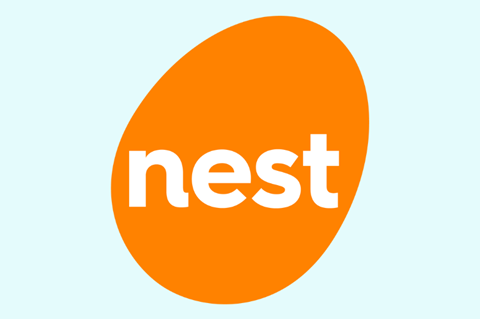Nest, the UK’s biggest defined contribution (DC) master trust, plans to enter the bulk annuity market as part of its new post-retirement proposition.
The £49bn pension fund is developing options for its members to aid their decision-making before, at, and post-retirement, as well as catering for those unable to make a choice. This will include the addition of a flexible drawdown facility – something Nest has been lobbying for over the past few years.
It has brought in WTW and Hymans Robertson to help with the development of the service, and will soon launch a tender for an insurance partner to provide longevity protection for older retirees.
“We think it’s really important that we have a really active role as the fiduciary to support our members to achieve good retirement outcomes.”
Gareth Turner, Nest
The bulk annuity element will form the latter stage of its decumulation offering, providing secure incomes for older pensioners following a flexible drawdown offering in the first stage of retirement.
Gareth Turner, head of strategic investment projects at the master trust, explained Nest’s decumulation blueprint in an interview for the DC Investment Forum’s podcast series.
“We think it’s really important that we have a really active role as the fiduciary to support our members to achieve good retirement outcomes,” he said.
This has led to Nest seeking to use its scale in terms of both assets and membership to establish a bespoke decumulation proposition.
Turning pension pots into a ‘wage replacement’

The proposition is the result of substantial research, including work with members and analysis of overseas systems in Australia, New Zealand and North America.
Nest conducted member and consumer research in the period following the introduction of pension freedoms a decade ago, and found that, according to Turner, “members want to use their Nest savings for a lifelong income akin to a wage replacement”.
However, as very few expect to take or receive financial advice, members want support from their pension scheme when they access their pension pot, he explained.
“The use case for our product is to support those people and provide a core default pathway for our members when they transition from accumulation to decumulation, and to provide them with a lifelong income,” he said.
“The scheme [will take] decisions on their behalf, like what’s a sustainable withdrawal rate, and how you provide longevity protection.
“Members can access something like a wage replacement, without burdening them with complex and unmanageable decisions on their own.”
Nest’s retirement pathways and the role of bulk annuities

Nest’s proposition involves two main pathways: a “do it myself” option and a “do it for me” option.
Under the “do it myself” option, members can use Nest’s self-select investment options to either remain invested through retirement or for a set period. They will have the option to transfer out, fully withdraw their capital or buy an annuity at any time.
Nest will soon launch a tender for an independent annuity broker so that it can facilitate individual annuity purchases for those members who want to follow this route.
The “do it for me” route will involve a new flexible income account, with members remaining invested in income-producing assets. Members will be able to state when they want to draw an income, while Nest will set the amount they will receive based on their pot size – and, crucially, designed to last for a member’s whole life.
This income can fall if the investment pot falls, but can also pay bonuses if the fund generates excess investment returns. Nest is targeting April 2026 as a ‘go live’ date for the new drawdown fund.
Alongside this, Turner explained that Nest was exploring the idea of using part of members’ pots to purchase bulk deferred annuities for cohorts of members around age 75. These would pay out a secure income for retirees from around age 85.
“From a member’s perspective, what they would see the whole way through is a sustainable income provided to them by Nest,” Turner said. “In the background, we would be blending strategies together to deliver that income to them.”
“There is going to be some trade-off between the flexibility that you have when you first enter the solution and the benefits of certainty as you progress through it.”
Gareth Turner, Nest
The master trust is working with Hymans Robertson and WTW on the deferred bulk annuity concept. Turner said the master trust hoped to finalise its insurance partner by the end of this year before starting more intense work on the design of the solution.
As part of the discussions, Turner said Nest wanted to ensure members could retain the flexibility to transfer out of the pension scheme even after a deferred annuity had been purchased.
He said: “We think there’s a way of doing that, and all the conversations we’ve had with insurers suggest there is too, but I think there is going to be some trade-off between the flexibility that you have when you first enter the solution and the benefits of certainty as you progress through it.”
The same principle applied to death benefits, Turner said. The drawdown section of a member’s pension – which would be the majority of their pot – would provide death benefits, and Nest is exploring how these could be extended to include at least part of a member’s pot that had been used to buy a deferred annuity.
Nest finally set for flexible drawdown

Nest has been lobbying for the ability to provide flexible drawdown for almost a decade. Unlike private sector providers, it requires primary legislation to be passed by parliament in order to provide this service.
Speaking on an employer webinar late last year, Mark Rowlands, Nest’s then-head of retirement, said the master trust had government support to enact such a change and it could be in effect as soon as April 2026.
“It’s a huge step forward and puts our members on an equal footing with other pension schemes,” Rowlands said.
Nest currently offers a “guided retirement fund”, launched in 2020, which allows members to remain invested and take money out. The amount they withdraw is up to them, meaning their pension pot could run out.
The future of DC? Nest unveils retirement blueprint
It is almost exactly 10 years since Nest first came to market with a post-retirement proposition for its members. The current proposal is an evolution of the initial plan, which Pensions Expert examined in this article from June 2015.
Turner explained that Nest’s research had found that its members typically wanted a ‘flex first, fix later’ approach to retirement income.
“That’s best served by having an invested solution, but then later on, they’re prepared to trade off some of that flexibility for greater security,” he said.
In 2016 the government consulted on allowing Nest to enter the drawdown market, but after extensive discussions with the pensions industry, it opted not to allow the move.
Those against it at the time said Nest could have an unfair advantage as an effectively state-backed entity competing with private sector providers, while others argued that auto-enrolment pension pots were mostly too small to support drawdown.
In 2017, the Department for Work and Pensions opted not to permit Nest to offer drawdown services, instead choosing to rely in innovation from other providers. However, by and large this has not materialised.
Beyond Nest: The impact on the wider DC sector

Other master trusts are also exploring their at- and post-retirement services, largely triggered by the government’s desire to introduce default decumulation options for DC members.
“It’s our very strong belief that it should be the responsibility of trustees to manage the risks that members face in retirement, in much the same way that trustees take on a fiduciary duty for members in accumulation.”
Gareth Turner, Nest
In the Pension Schemes Bill, published last week, the government set out primary legislation around what it terms “default pension benefit solutions”.
It wants trustees to “use their expertise to remove the need for members to consider their mortality or become investment specialists”, according to the explanatory notes document published alongside the bill.
Nest’s Turner indicated that this chimed with the master trust’s view.
“It’s our very strong belief that it should be the responsibility of trustees to manage the risks that members face in retirement, in much the same way that trustees take on a fiduciary duty for members in accumulation,” he said.
“For us, that means that the trustee should be taking decisions on behalf of members in a default strategy on things like what a sustainable income rate is, and how to provide longevity protection to members. It’s through trustees exercising their fiduciary duty that we will be able to deliver the best outcomes to people in retirement.”
Nest’s work, Turner hopes, will extend beyond supporting its own members and help spark innovation across the DC sector.
“We’d be really happy to see the lessons that we’ve learned through the co-design process applied to other defined contribution schemes in the UK and around the world,” he said.
To hear Gareth Turner’s full interview, download the DCIF podcast episode here.






















